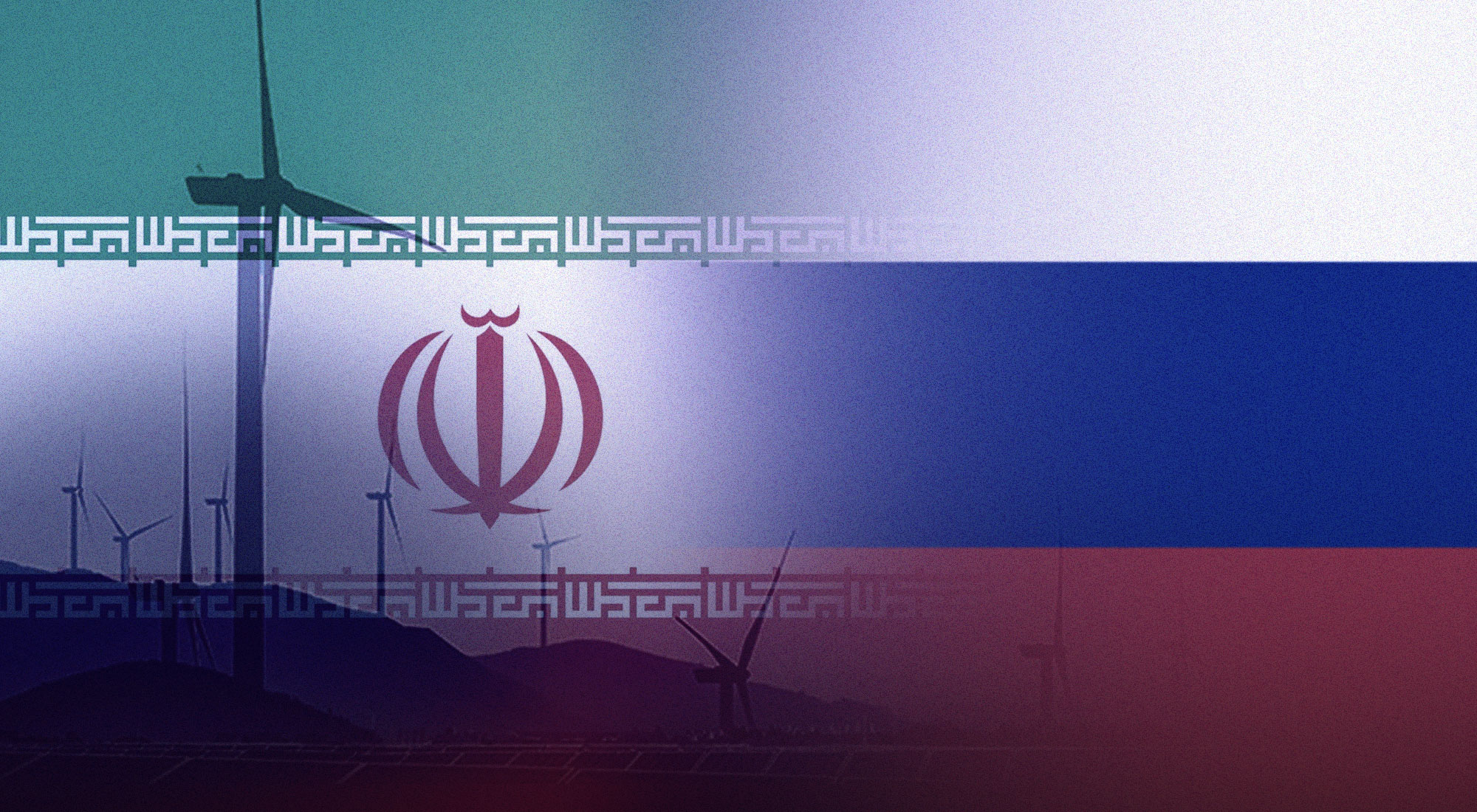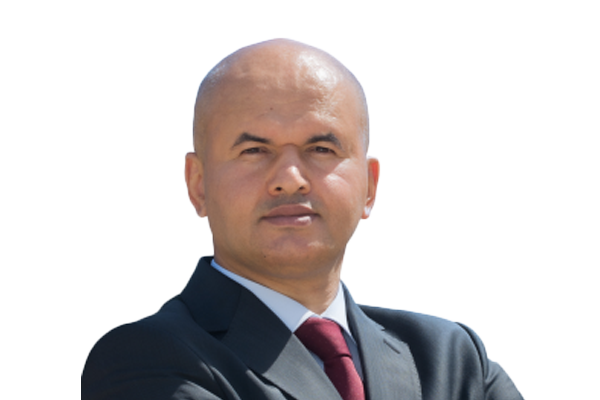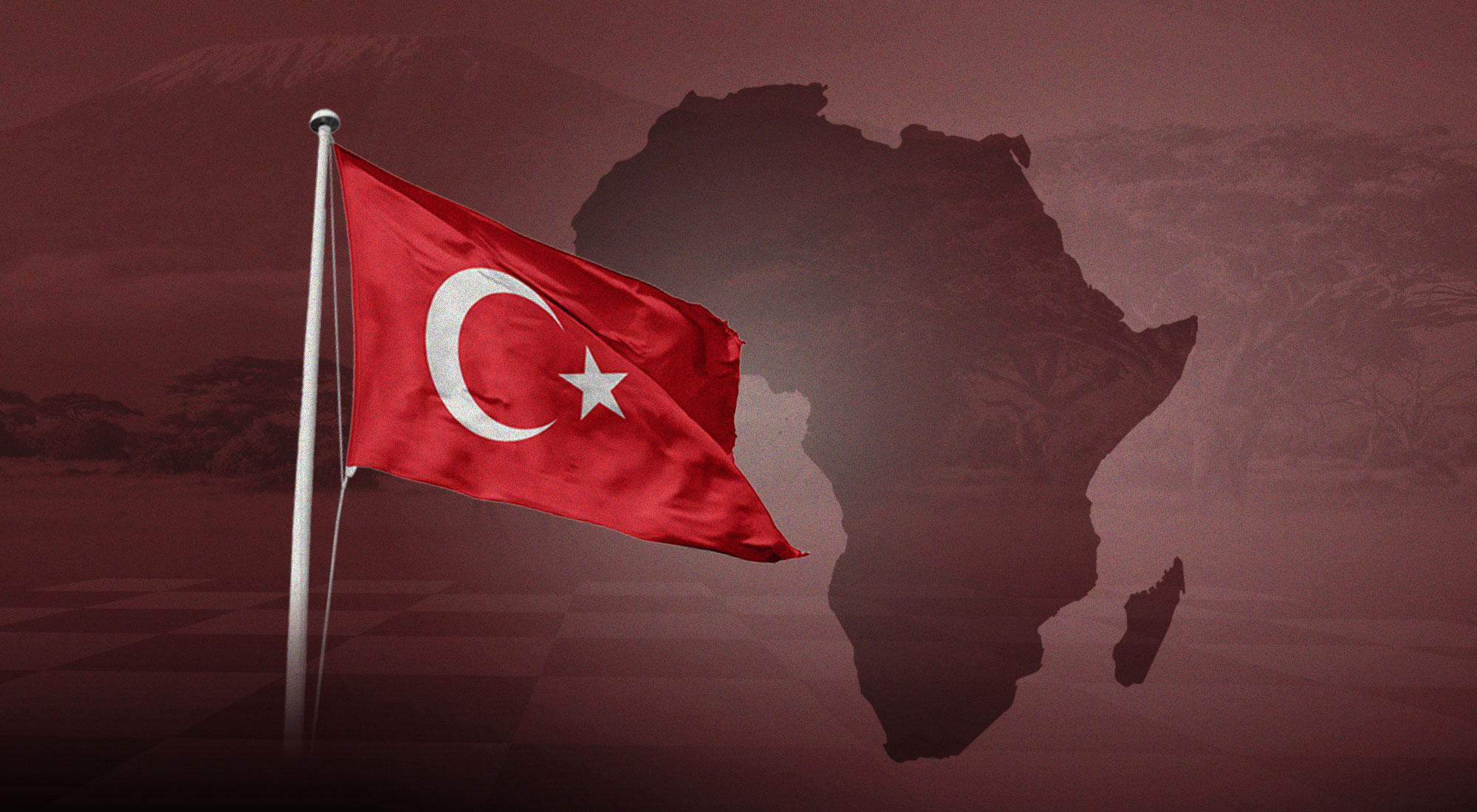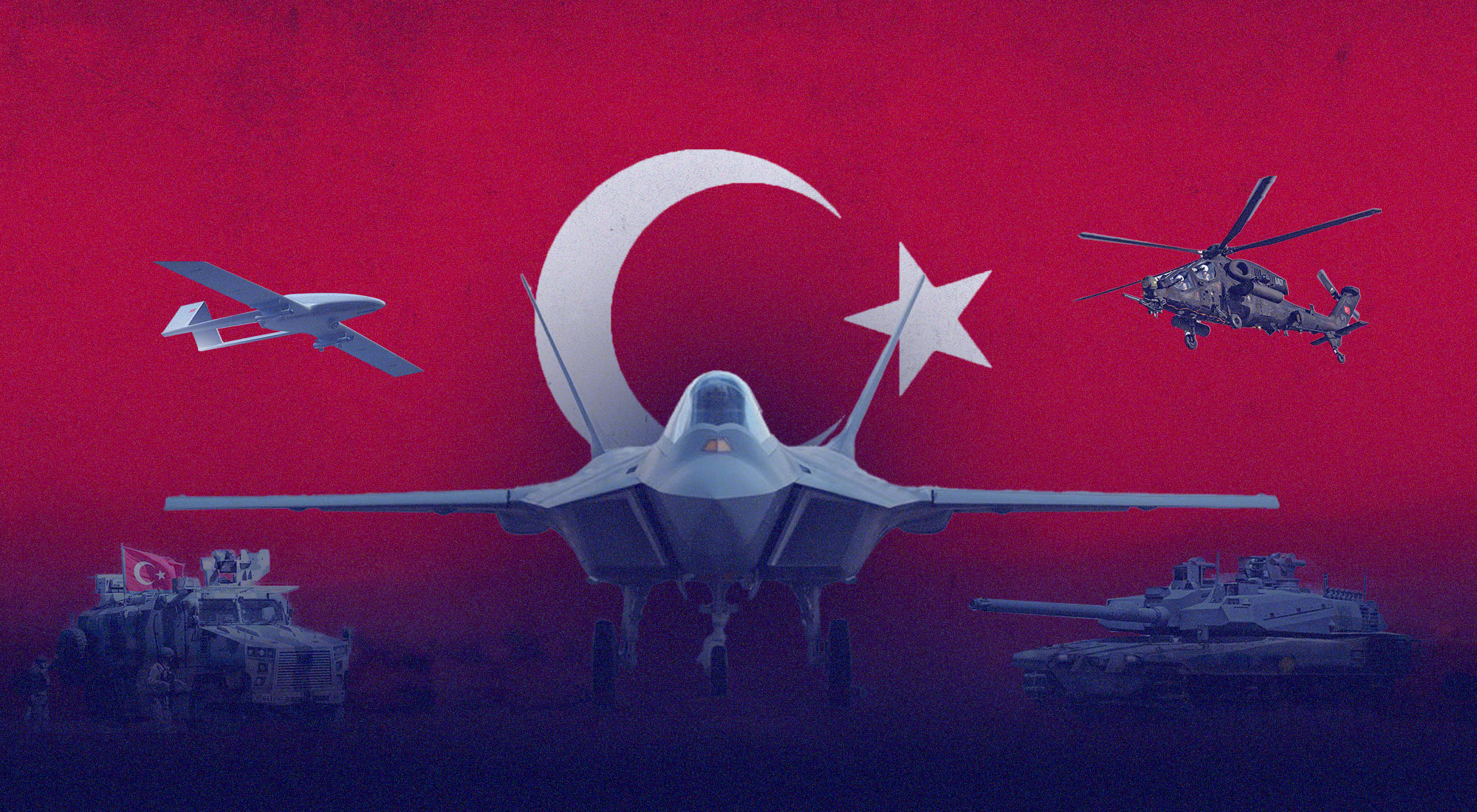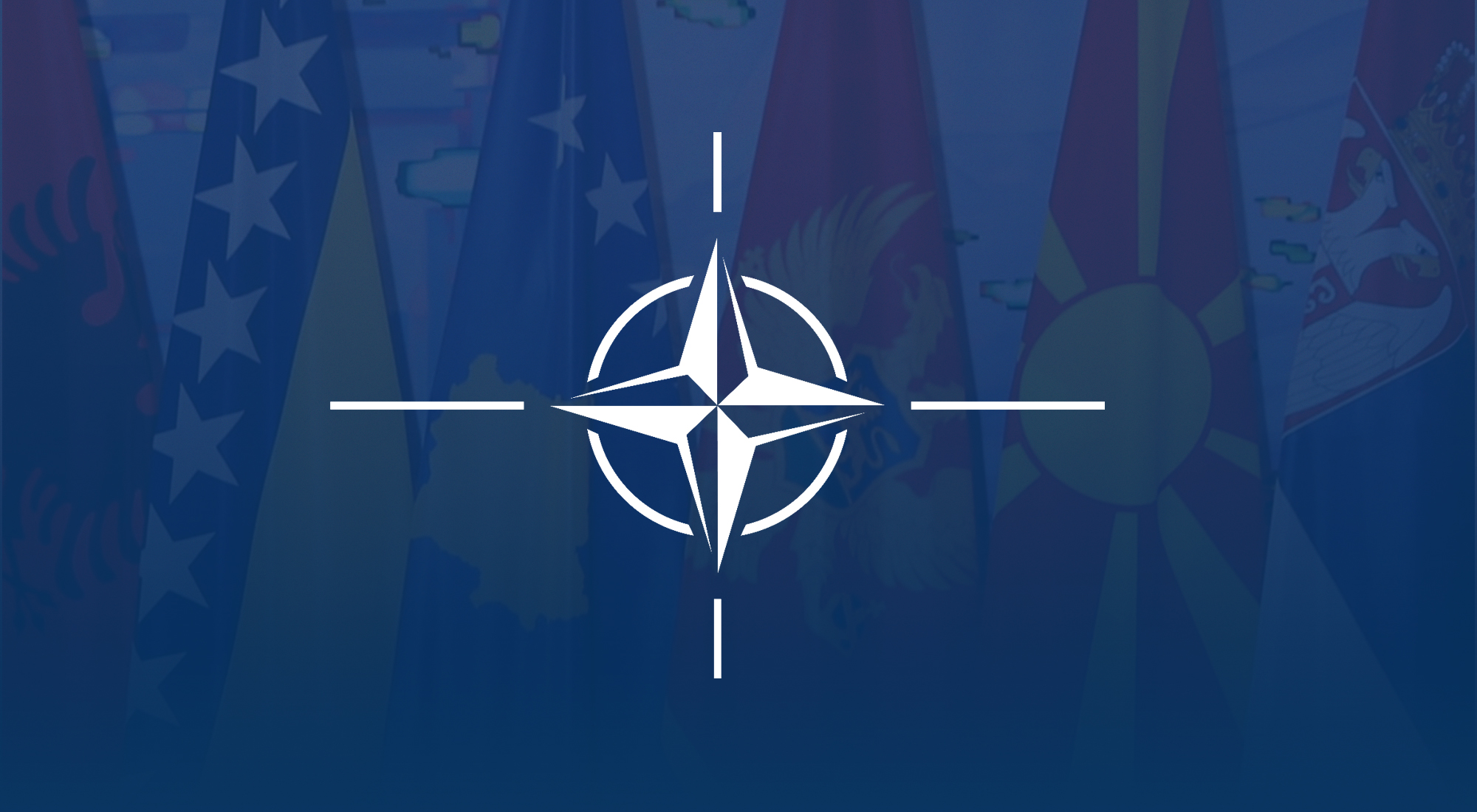When Iranian President Masoud Pezeshkian and Russian President Vladimir Putin signed the Treaty on Comprehensive Strategic Partnership in Moscow on 17 January 2025, it marked a significant turning point in the expanding partnership between Iran and Russia. Broad collaboration in vital areas like defense, counterterrorism, energy, finance, technology, cybersecurity, peaceful nuclear energy, and regional security is outlined in this twenty-year agreement, which has 47 provisions. In the face of escalating international tensions, the commitment shows both nations’ strategic attempts to deepen their relationship. Important clauses center on strengthening military cooperation, fostering regional stability, especially in Central Asia and the Transcaucasus, preventing illegal extraterritorial sanctions, and increasing bilateral trade. The agreement’s automatic five-year extensions highlight how long-term this strategic alignment is.[1]
The deal lacks a mutual defense clause and does not publicly acknowledge disputed territories like Crimea, despite its strategic importance. However, the agreement provides a framework for both countries to evade these economic pressures and establish new trade, energy, and security alliances, offering a vital response to Western sanctions. Energy cooperation is at the core of this collaboration, with Russia providing natural gas and aiding in the construction of infrastructure to Iran, which is facing an internal energy crisis. In exchange, Russia wants to reduce its reliance on Western markets and increase its opportunities in the energy industry.[2]
Energy Cooperation: The Heart of the Pact
Energy cooperation is the main tenet of the strategic partnership, with both nations seeking to strengthen their domestic energy industries while reducing the impact of Western sanctions. The two countries aim to strengthen their standing in the world energy market by strengthening their energy links. Significant investments and infrastructure projects are part of this agreement, which will improve both nations’ long-term energy security.[3]
Oil and Gas Cooperation
The collaboration between Russia and Iran is based on the oil and gas industry. Russia would initially provide Iran with 2 billion cubic meters (bcm) of gas per year under the arrangement, with ambitions to eventually raise this quantity to 55 bcm. In the face of international sanctions, this strategic partnership will give Russia a new market for its natural gas while also assisting Iran in addressing its energy needs.[4] To increase their flexibility in energy commerce, the two nations are also collaborating on a pipeline project that would carry Russian gas to northwest Iran, maybe via Azerbaijan or Turkmenistan.[5] Furthermore, the US$40 billion memorandum of understanding between Iran’s National Iranian Oil Company (NIOC) and Russia’s Gazprom will help develop important oil and gas fields, such as the Kish and North Pars fields, bolstering both countries’ energy infrastructure and expanding their position in the world energy market.[6]
Nuclear Energy Collaboration
Russia and Iran are making great progress in their nuclear energy cooperation, in addition to their cooperation in oil and gas. The development of two additional reactors at the Bushehr nuclear power plant is one of the ways that Russia’s state-owned nuclear powerhouse Rosatom is assisting Iran in increasing its nuclear energy capability.[7] Iran will be able to lessen its dependency on fossil fuels and diversify its energy mix thanks to these developments. Additionally, talks for more massive nuclear reactors are already under way, confirming Russia’s position as a major contributor to Iran’s nuclear energy future. In line with both countries’ larger geopolitical objectives, this relationship aims to resist Western dominance in the nuclear energy industry in addition to collaborating on technology.[8]
Infrastructure and Technology
Modernizing Iran’s energy infrastructure, especially its gas and electrical grids, is a major component of the agreement. Russia will help Iran upgrade these networks, which now suffer from major inefficiencies, including the loss of 11% of gas during distribution and 13% of generated electricity.[9] Through this partnership, Iran’s energy use will become more efficient and less wasteful. Furthermore, Russia’s technology transfers will support Iran’s development of cutting-edge energy systems, enhancing the stability and sustainability of its energy industry. As both nations deal with outside constraints, such as sanctions that prevent them from acquiring contemporary energy technologies, these advancements are crucial.[10]
Regional Gas Hub Aspirations
Iran has long sought to establish itself as a regional gas center, using its enormous reserves and advantageous location to offer a steady supply of energy to its neighbors. This goal fits with its larger geopolitical goals and establishes Iran as a major power in the Middle East, Central Asia, and other energy-related regions. Iran may increase regional energy security and diversify its energy revenue sources by selling gas to nations like Turkey, Armenia, and perhaps Europe. However, Iran’s reliance on imported gas, especially from Russia, to meet its domestic energy needs complicates this objective. This dependence hinders Iran’s ambitions to become a regional energy supplier by limiting its capacity to attain full energy self-sufficiency. Although overcoming the challenges of striking a balance between internal demand and export objectives remains a crucial problem, pursuing this goal gives Iran and its neighbors enormous rewards.[11]
Geopolitical and Strategic Implications of the Iran-Russia Partnership
Economic Resilience and Sanctions Evasion
The necessity to mitigate the economic effects of Western sanctions is the main driver behind the Iran-Russia strategic partnership. To enable long-term economic collaboration, both countries aim to create alternative banking systems, such as the MIR, that circumvent institutions under Western authority. To maintain economic resilience, this entails increasing bilateral trade in energy-related sectors, including nuclear power, gas, and oil as well as barter trade and non-dollar transactions. Iran and Russia want to strengthen their economies against external economic pressures by reducing their reliance on Western markets and financial networks.[12]
Military Influence
The collaboration includes important geopolitical and military facets in addition to economic cooperation, especially in the Middle East, Transcaucasia, and Central Asia. Both countries hope to fight Western-aligned forces in these areas by increasing their diplomatic and security clout. This strengthens their security collaboration and involves possible arms exchange, intelligence sharing, and combined military training. Their cooperation in the high-tech and cybersecurity sectors also improves technological self-sufficiency and fortifies national defense capabilities.[13]
Strategic Depth and Power Realignment
The Iran-Russia alliance, which is based on common political and security goals and specifically challenges American power in the Middle East and Central Asia, differs from conventional energy alliances that are motivated by market efficiency. Their collaboration goes beyond energy markets to include the creation of alternate commerce and financial avenues as well as military coordination in war-ridden zones like Syria. By changing the balance of power in the region, this strategic alignment positions their union as a geopolitical tool as well as an economic necessity.[14]
Diversification of Energy Routes
Regional trade routes and energy flows are expected to change because of Russia and Iran’s cooperation on projects like the International North-South Transport Corridor and new gas pipelines. These programs strive to diversify energy transit routes, which have historically been concentrated in a small number of vital pipelines, increasing countries’ susceptibility to geopolitical risks and disruptions. They also aim to improve bilateral energy exchanges.[15] This collaboration reduces dependency on current transit routes that are vulnerable to political unrest or sanctions by creating alternate routes via Azerbaijan and Turkmenistan. By lowering chokepoints, fostering new energy trade opportunities, and bolstering the stability of energy supplies throughout the region—including Europe and Asia—such diversification is essential for regional energy security.[16]
Trade Routes
To improve connectivity throughout Eurasia, Russia, Iran, and other regional allies are making significant investments in new trade routes. The International North-South Transport Corridor (INSTC), a cooperative project aimed at connecting Russian and Iranian ports and cutting transit times by as much as 40%, particularly between Moscow and Mumbai, is a major undertaking in this endeavor.[17] Furthermore, a railway project is being built to provide direct access to international markets via the Indian Ocean by connecting St. Petersburg with Bandar Abbas, Iran’s southern port. Connecting Russia to nations in the Caspian basin, the Arabian Gulf, and Central, South, and Southeast Asia is made possible by the larger INSTC. It is anticipated that these initiatives will improve economic integration and boost regional trade.[18]
Regional Influence and Energy Cooperation
By providing a competitive alternative to the U.S.-led international order, the energy triangle—which consists of China, Iran, and Russia—is changing the dynamics of the region. These nations are collaborating to oppose Western hegemony and cushion the effects of sanctions that have put a great deal of strain on their economies. Iran’s membership in the Shanghai Cooperation Organization (SCO), which promotes tighter military and security cooperation with China and Russia, significantly enhances its strategic significance. Iran has a powerful impact on changing regional energy flows as a major transit hub for Russian gas shipments to Asian markets.[19] Both nations can contribute to energy route diversification, minimize dependency on Western-led energy networks, and have an impact on global supply chains as significant providers of natural gas and oil. More cooperation in infrastructure, such as pipelines and energy projects, would tip the energy power balance in their favor, especially in Asian and European markets.[20]
However, several obstacles prevent complete collaboration. The long-lasting impact of Western sanctions limits Iran’s economic potential and access to foreign currency. Additionally, Iranian gas and Russian gas compete in the same markets, which could hurt Iran’s natural gas exports. Political and technological barriers also impede the development of infrastructure, especially in the Caspian Sea region, where building pipelines presents logistical, geopolitical, and legal challenges. For the energy triangle to succeed and to provide long-term strategic and financial gains for all stakeholders, these obstacles must be overcome.[21]
Impact of the Iran-Russia Energy Partnership on Regional Energy Security
- Infrastructure Restrictions: As a result of Western sanctions, Iran’s energy infrastructure is beset by outdated technology and restricted access to global knowledge. This makes it more difficult to utilize all its abundant natural resources. Iran continues to face major obstacles in modernizing its energy industry, even with continuous efforts to strengthen indigenous capabilities. However, by improving infrastructure and boosting energy production capacity, the partnership with Russia aids in closing this technological divide.[22]
- Geopolitical Shifts: The alliance between Iran and Russia also puts American dominance in the Middle East and beyond in jeopardy. By offering both military and economic backing, it increases Iran’s geopolitical clout, especially in war-torn regions like Syria and Iraq. Despite the ongoing pressure from Western sanctions, this alliance strengthens Iran’s position as a stronger global actor and raises its profile in international diplomacy.[23]
Iran energy crisis and Iran-Russia strategic pact
Iran’s natural gas crisis is marked by several critical factors that exacerbate its economic and industrial challenges. A 25% natural gas shortfall, acute power outages, and a finite supply of oil are the hallmarks of Iran’s persistent energy crises. These problems have serious economic repercussions, including decreased industrial output and frequent power outages, even though the region has some of the greatest natural gas reserves in the world. The impact of Western sanctions, which limit access to contemporary technology and investment, outdated infrastructure, and inefficient energy distribution—roughly 11% of gas is lost—are the main causes of this dilemma. These issues make it more difficult for Iran to meet its domestic demand and jeopardize its energy security.[24]
Domestic shortages of natural gas have led to frequent power outages across the country, with petrochemical refineries operating at just 70% of their capacity, hindering production and creating further supply chain disruptions. One of the main contributors to these shortages is the country’s outdated infrastructure, which results in losses during production, distribution, and transmission. This inefficiency not only diminishes the available energy supply but also contributes to higher costs and further strain on Iran’s energy sector. The economic impact has been severe, as the energy crisis has contributed to a 45% decline in steel production, a key industrial sector, while also limiting overall economic activity. These combined issues highlight the systemic challenges Iran faces in managing its natural resources and maintaining its economic stability, making it more reliant on external energy supplies and less competitive on the global stage.[25]
Strengthening collaboration in energy infrastructure and natural gas supply will enhance regional energy connectivity in addition to addressing Iran’s energy difficulties. But problems still exist. Russian gas supplies may compete with Iranian gas exports, reducing Iran’s negotiating power in international markets. The partnership’s financial sustainability is further complicated by ongoing Western sanctions, which also impede technological transfers and foreign investments that are necessary for infrastructure development.[26]
Comparing the Iran-Russia Energy Partnership to Other Major Energy Alliances
Together, Russia and Iran possess over 20% of the world’s oil reserves and 40% of its natural gas reserves, making them the owners of some of the greatest energy reserves in the world. They have considerable control over the world’s energy markets thanks to this resource concentration, which affects supply chains, pricing strategies, and geopolitical negotiations. The Iran-Russia alliance is a combination of both production capabilities and large oil reserves, in contrast to the Russia-China collaboration, which is a producer-consumer model, and OPEC, which functions as a broad coalition of oil producers. This collaboration has the potential to challenge Western-dominated energy systems, change trade patterns, and impact international energy policies if it is handled well. However, achieving its full potential is severely hampered by logistical issues, technological restrictions, and ongoing Western sanctions.[27]
Market rivalry, especially in Asia and Europe, where both nations compete for supremacy, is a major barrier to closer Iran-Russia cooperation. They must negotiate the challenges of vying for important clients while trying to coordinate policy, notwithstanding their strategic alignment. Iran and Russia have the challenging goal of increasing their exports without compromising each other’s market share, in contrast to OPEC, which aims to stabilize oil prices among its members. In the global energy environment, this dualism offers both chances for cooperation and the possibility of conflict.[28]
Challenging Western Dominance
The Iran-Russia collaboration has a wider geopolitical goal than just economic cooperation: it aims to challenge Western domination. Both countries aim to reduce the effects of sanctions and their reliance on financial institutions under Western authority. Their cooperation goes beyond energy to include geopolitical influence, alternate trade channels, and investment frameworks.[29] They are actively attempting to subvert the current unipolar order that is dominated by the U.S. and its allies by utilizing platforms like the Shanghai Cooperation Organization (SCO), the Eurasian Economic Union (EEU), and BRICS.
Through these multilateral interactions, Russia and Iran are positioned as key players in the movement toward a multipolar world by fostering greater economic integration, lowering trade barriers, and coordinating diplomatic initiatives. This changing alliance is a long-term plan to change global governance, not just a response to sanctions. They give countries in Asia, Africa, and beyond alternatives to Western economic systems by providing alternate trade routes and financial systems. Therefore, the Iran-Russia relationship is more than just energy cooperation; it is a strategic attempt to reshape global power structures and create new spheres of influence.[30]
The Recent U.S. Executive Order on Iran Sanctions: Impact on the Iran-Russia Relations
Signed on 4 February 2025, President Donald Trump’s National Security Presidential Memorandum (NSPM-2) aims to reinstate “maximum pressure” on Iran and has the potential to seriously upend the geopolitical alliance between Russia and Iran. In terms of the economy, these sanctions are meant to severely restrict Iran’s financial resources, making it more difficult for it to fulfill its obligations under its alliance with Russia. Iran may be compelled to put internal stability ahead of international cooperation due to growing economic pressure. Iran-Russia energy initiatives are directly hampered by restrictions on Iran’s energy industry, especially attempts to limit its oil exports to important consumers like China. This might undermine the economic basis of their partnership by impeding Russia’s intended investments in Iran’s gas and oil sectors.[31]
In addition to economic difficulties, U.S. sanctions make it more difficult for the two countries to cooperate militarily and financially. NSPM-2 may hinder financial transactions between Iran and Russia by limiting Iran’s access to international banking networks, especially by reiterating SWIFT restrictions. Although both countries have looked for alternate financial systems, increased pressure from the U.S. will probably impede their development. Furthermore, because Iran’s missile development and armaments capabilities are the focus of the sanctions, military cooperation confronts additional challenges. But this might also increase Iran’s dependence on Russian military know-how and technology, strengthening their defense cooperation despite outside criticism.[32]
Notwithstanding these challenges, the reimposed restrictions may unintentionally improve some facets of Iran-Russian cooperation. Both countries may step up their efforts to avoid sanctions through de-dollarization, alternate trade routes, and the use of shell companies in response to tighter Western restrictions. As they work to offset American dominance in international organizations like the UN Security Council, Iran and Russia may also become more diplomatically aligned. Additionally, the sanctions might encourage both nations to step up their “resistance economy” plans and create new economic structures that lessen reliance on financial and energy systems dominated by the West. Even though NSPM-2 has many obstacles, it might eventually encourage Russia and Iran to strengthen their long-term strategic partnership despite economic pressure from the West.[33]
U.S.-Israel Strikes on Iran’s Nuclear Facilities and the Future of the Iran-Russia Strategic Pact
The importance of this strategic cooperation has increased since the recent June 2025 U.S. and Israeli airstrikes on Iranian nuclear installations. The Fordow Uranium Enrichment Plant, the Natanz Nuclear Facility, and the Isfahan Nuclear Technology Center are the three main Iranian nuclear sites that were the target of a massive military operation by the United States on 22 June 2025, known as “Operation Midnight Hammer,” which involved airstrikes by B-2 stealth bombers and Tomahawk missiles.[34] Following Israeli strikes earlier in June, this was the first time the United States had directly intervened militarily in the ongoing crisis between Iran and Israel. The U.S. strikes were intended to destroy Iran’s nuclear program, which Israel and the U.S. claim is on the verge of creating nuclear weapons, but Iran disputes this and maintains that its program is peaceful.[35]
Iran’s Foreign Minister Abbas Araghchi responded to these strikes by highlighting the close “strategic partnership” and coordination between Iran and Russia and making an immediate trip to Moscow for urgent talks with President Vladimir Putin.[36] A strong ally of Iran, Russia has received military drones from Iran for the war in Ukraine and backed Tehran’s civilian nuclear program. Iran’s government change has always been opposed by the Kremlin, which has also cautioned against any steps that would incite radicalism in the nation. Additionally, Russia warned the United States against directly supporting Israel militarily in its fight with Iran, citing the possibility of nuclear disaster and regional instability.[37]
Conclusion: The Road Ahead
The Russia-Iran energy alliance, which was formally formed in January 2025 through their Comprehensive Strategic Alliance Agreement, represents a major strategic step in the larger geopolitical context that goes beyond oil and gas. This coalition, which was established in reaction to Western sanctions, seeks to alter regional dynamics and upend the current global oil system. Both countries aim to increase their geopolitical power, diversify their markets, and lessen economic pressures by utilizing their abundant energy resources.
But there are several obstacles in the way of productive collaboration. Russia and Iran continue to compete in the global energy market despite their emphasis on energy cooperation. Moscow’s capacity to completely help Tehran’s energy objectives is probably limited by its own economic concerns. The alliance confronts major infrastructure constraints and geopolitical risks, even while it can increase regional influence and open new commercial avenues.[38]
The new executive order by President Trump to reinstate the “maximum pressure” campaign on Iran has further complicated the situation. The fresh sanctions, which are intended to stop Iran’s oil exports and apply intense economic pressure, may make it more difficult for Iran to keep its promises to Russia. This decision may raise doubts about Russia’s engagement in Iran’s oil and gas industries and hinder the execution of cooperative energy projects.
Recent U.S. and Israeli strikes on Iran’s nuclear installations have further complicated the strategic cooperation. The relationship between Moscow and Tehran has been further cemented by these attacks, which targeted important locations at Fordow, Natanz, and Isfahan. Russia has provided Iran with strong diplomatic support while warning against further regional escalation. Russia stressed the grave ramifications of such actions for regional and worldwide security, denouncing the strikes as “irresponsible” and a “gross violation of international law.” The Russian Foreign Ministry called for prudence and emphasized the increased risk of conflict in the already unstable Middle East, urging the international community to respond through diplomatic channels like the UN Security Council.[39]
The strikes, according to Iran’s Foreign Minister Abbas Araghchi, who made an urgent trip to Moscow for high-level discussions with President Putin, crossed a “very big red line”, highlighting the tight cooperation between the two countries during the crisis. Russia’s answer demonstrates its unwavering dedication to strategic collaboration with Iran, especially in the face of growing military aggression and pressure from the West. Moscow has reaffirmed its partnership with Tehran and its willingness to offer diplomatic support, but it still views the strikes as provocative, unlawful, and disruptive.[40]
Going forward, the Russia-Iran energy alliance’s long-term survival will rely on its capacity to manage sanctions, get over infrastructure obstacles, and adjust to the changing needs of the world’s energy supply. The cooperation may not reach its full potential because of enduring geopolitical and economic limitations, even while it provides alternate trade routes and opportunities for regional influence. The ability of Moscow and Tehran to align their strategic goals, maintain ongoing cooperation, and adapt to a changing geopolitical environment—including possible shifts in U.S. policy that could either strengthen or strain their collaboration—will determine whether this alliance develops into a transformative force in global energy geopolitics or stays a significant but regionally confined partnership.
[1] Agnes Helou, “Russia Signs Comprehensive Strategic Partnership with Iran,” Breaking Defense, January 17, 2025, https://breakingdefense.com/2025/01/russia-signs-comprehensive-strategic-partnership-with-iran/.
[2] Nigel Li, “Russia-Iran Strategic Partnership Treaty Highlights Bilateral Priorities,” Caspian Policy Center, January 28, 2025, https://www.caspianpolicy.org/research/category/russia-iran-strategic-partnership-treaty-highlights-bilateral-priorities.
[3] “Russia, Iran Energy Partnership Harbors Strategic Gains and Potential Risks: Expert,” Anadolu Agency, February 5, 2025, https://www.aa.com.tr/en/energy/energy-diplomacy/russia-iran-energy-partnership-harbors-strategic-gains-and-potential-risks-expert/47294.
[4] “Key Provisions of Russia-Iran Strategic Cooperation Treaty,” Reuters, January 17, 2025, https://www.reuters.com/world/key-provisions-russia-iran-strategic-cooperation-treaty-2025-01-17/.
[5] “Russia, Iran energy partnership harbors strategic gains and potential risks: Expert.”
[6] “Gazprom, Iran Sign Tentative Energy Deal Worth $40 Billion,” Radio Free Europe/Radio Liberty, July 19, 2022, https://www.rferl.org/a/iran-russia-energy-deal/31950165.html.
[7] “Iran Signs Strategic Partnership Agreement with Russia,” Nuclear Engineering International, January 21, 2025, https://www.neimagazine.com/news/iran-signs-strategic-partnership-agreement-with-russia/.
[8] “Russia Discussing New Nuclear Energy Units with Iran,” World Nuclear News, January 20, 2025, https://www.world-nuclear-news.org/articles/russia-discussing-new-nuclear-energy-units-with-iran.
[9] “Russia, Iran Energy Partnership Harbors Strategic Gains and Potential Risks: Expert.”
[10] “Iran Signs Strategic Partnership Agreement with Russia.”
[11] “Russia, Iran Agree on Strategic Pact, Near Gas Deal,” Energy Intelligence, January 17, 2025, https://www.energyintel.com/00000194-757c-d57f-a1fe-7d7f9ff00000.
[12] Nigel Li “Russia-Iran Strategic Partnership Treaty Highlights Bilateral Priorities.”
[13] Amir Soltanzadeh, “Iran’s Strategic Pivot Deepens Ties with Russia,” DW, January 17, 2025, https://www.dw.com/en/irans-strategic-pivot-deepens-ties-with-russia/a-71325808.
[14] Emil Avdaliani, “Iran and Russia Enter a New Level of Military Cooperation,” Stimson, March 6, 2024, https://www.stimson.org/2024/iran-and-russia-enter-a-new-level-of-military-cooperation/.
[15] Umud Shokri, “North-South Transport Corridor: Iran-Russia New Railway to Circumvent Western Pressure,” Gulf International Forum, https://gulfif.org/north-south-transport-corridor-iran-russia-new-railway-to-circumvent-western-pressure/., accessed February 5, 2025
[16] Samantha Fanger, “Azerbaijan and Türkiye Solidify Key Energy Alliance with Turkmen Gas Deal,” Caspian Policy Center, June 13, 2024, https://caspianpolicy.org/research/energy/azerbaijan-and-turkiye-solidify-key-energy-alliance-with-turkmen-gas-deal.
[17] “Inside Russia and Iran’s New Transport Corridor,” Transportation & Logistics International,” https://tlimagazine.com/news/inside-russia-and-irans-new-transport-corridor/., Accessed February 5, 2025.
[18] Aishwarya Sanjukta Roy Proma, “Russia-Iran Trade Cooperation: A New Route with Convergence of Interest,” Modern Diplomacy, August 13, 2023, https://moderndiplomacy.eu/2023/08/13/russia-iran-trade-cooperation-a-new-route-with-convergence-of-interest/.
[19] Mercy A. Kuo, “The China-Iran-Russia Triangle: Alternative World Order?,” The Diplomat, July 7, 2022. https://thediplomat.com/2022/07/the-china-iran-russia-triangle-alternative-world-order/.
[20] Michelle Grisé and Alexandra T. Evans, “The Drivers of and Outlook for Russian-Iranian Cooperation,” RAND, October 4, 2023, https://www.rand.org/pubs/perspectives/PEA2829-1.html.
[21] Avesta Afshari Mehr, “What Will The New Iran-Russia Partnerships Mean For The World?” The Moscow Times, January 6, 2025, https://www.themoscowtimes.com/2025/01/06/what-will-the-new-iran-russia-partnerships-mean-for-the-world-a87518.
[22] “Iran-Russia Cooperation in Energy Industry,” Iran Daily, February 5, 2025, https://newspaper.irandaily.ir/7763/4/13742.
[23] “Expansion of the Russo–Iranian Nexus,” GIGA, November 7, 2024, https://www.giga-hamburg.de/en/publications/giga-focus/expansion-of-the-russo-iranian-nexus.
[24] “Iran’s Energy Crisis,” Foundation for Defense of Democracies, January 20, 2025, https://www.fdd.org/analysis/op_eds/2025/01/20/irans-energy-crisis/.
[25] Farnaz Fassihi and Leily Nikounazar, “Iran’s Energy Crisis Hits ‘Dire’ Point as Industries Are Forced to Shut Down,” The New York Times, December 21, 2024, https://www.nytimes.com/2024/12/21/world/middleeast/iran-economy-energy-crisis.html.
[26] “Iran Signs Strategic Partnership Agreement with Russia.”
[27] Karim Sadjadpour and Nicole Grajewski, “Autocrats United: How Russia and Iran Defy the U.S.-Led Global Order,” Carnegie Endowment for International Peace, October 10, 2024, https://carnegieendowment.org/research/2024/10/russia-iran-oil-gas-ukraine-syria?lang=en.
[28] “Iran Dreams of Energy Cooperation with Russia,” Iran International, October 14, 2023, https://www.iranintl.com/en/202310143417.
[29] Samuel Ramani, “After Setback in Syria, Will a Strategic Partnership Strengthen Russia and Iran’s Ties?,” The New Arab, January 27, 2025, https://www.newarab.com/analysis/will-strategic-partnership-strengthen-russia-and-irans-ties., Accessed February 5, 2025.
[30] Ebrahim Fallahi, “Iran-Russia Comprehensive Agreement: Outcomes and Implications,” Tehran Times, January 17, 2025, https://www.tehrantimes.com/news/508724/Iran-Russia-comprehensive-agreement-outcomes-and-implications., Accessed February 5, 2025.
[31] Congressional Research Service, “U.S. Sanctions on Iran,” February 2025. https://crsreports.congress.gov/product/pdf/IF/IF12452.
[32] Dana Stroul, “Russian Iranian Cooperation and Threats to U.S. Interests,” The Washington Institute for Near East Policy, April 17, 2024, https://www.washingtoninstitute.org/policy-analysis/russian-iranian-cooperation-and-threats-us-interests.
[33] Karim Sadjadpour and Nicole Grajewski, “Autocrats United: How Russia and Iran Defy the U.S.-Led Global Order.”
[34] “Alarm Grows after the US Inserts Itself into Israel’s War against Iran with Strikes on Nuclear Sites,” AP News, June 22, 2025, https://apnews.com/article/israel-iran-war-nuclear-trump-bomber-news-06-22-2025-c2baca52babe915e033ae175ce8b2687.
[35] Mariel Ferragamo, “U.S., Israel Attack Iranian Nuclear Targets—The Damage So Far,” Council on Foreign Relations, June 22, 2025, https://www.cfr.org/article/us-israel-attack-iranian-nuclear-targets-damage-so-far.
[36] “Iran’s Foreign Minister Heading to Russia to Meet with Putin after US Strikes.” Politico, June 22, 2025, https://www.politico.eu/article/iran-foreign-minister-abbas-araghchi-russia-vladimir-putin-us-strikes-nuclear-sites/.
[37] Soldatkin, Vladimir and Andrew Osborn, “Russia Tells US Not to Strike Iran, Warns of Nuclear Catastrophe,” Reuters, June 18, 2025, https://www.reuters.com/world/middle-east/russia-warns-us-not-help-israel-militarily-against-iran-2025-06-18/.
[38] Henry Rome, “Iran & Russia: Growing Economic Competition,” The Iran Primer, July 18, 2022, https://iranprimer.usip.org/blog/2022/jul/18/iran-russia-growing-economic-competition.
[39] “Russia Condemns ‘Irresponsible’ U.S. Strikes on Iran,” The Moscow Times, June 22, 2025, https://www.themoscowtimes.com/2025/06/22/russia-condemns-irresponsible-us-strikes-on-iran-a89526.
[40] “Iran Has Little Choice but to Retaliate against US – as Russia Faces Urgent Decision on How to Back Tehran,” Sky News, June 22, 2025, https://news.sky.com/story/iran-has-little-choice-but-to-retaliate-against-us-as-russia-faces-urgent-decision-on-how-to-back-tehran-13387090.



